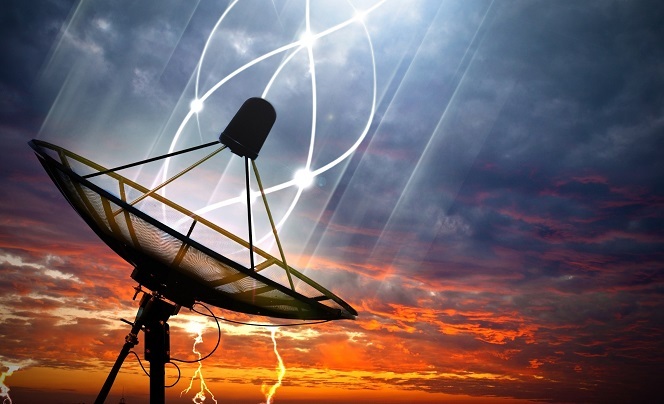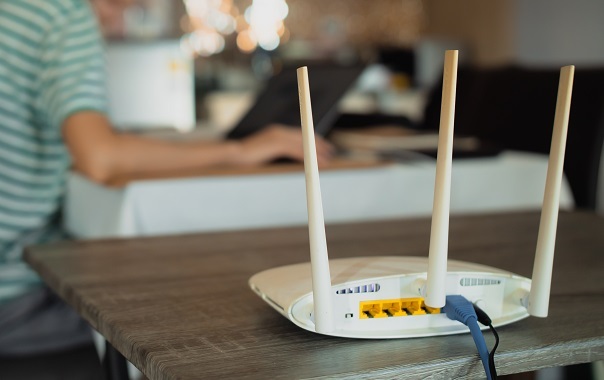
 Data Structure
Data Structure Networking
Networking RDBMS
RDBMS Operating System
Operating System Java
Java MS Excel
MS Excel iOS
iOS HTML
HTML CSS
CSS Android
Android Python
Python C Programming
C Programming C++
C++ C#
C# MongoDB
MongoDB MySQL
MySQL Javascript
Javascript PHP
PHP
- Selected Reading
- UPSC IAS Exams Notes
- Developer's Best Practices
- Questions and Answers
- Effective Resume Writing
- HR Interview Questions
- Computer Glossary
- Who is Who
What is the full form of HMS?
Introduction
Headend Management System (HMS) is a facility that accepts signal from the satellite and processes it into signal form via cable networks.

It is a distribution centre for receiving, modifying and sending re-modified signals. This system is utilised in our day-to-day life services like satellite dishes, microwave receivers, modulators, antennae, etc.
Overview of HMS
It is an essential service of the Modern era. "Headend is a system" for receiving television or radio signals and processing them and sending them to telecommunication systems. It includes the various equipment for various services like voice over internet protocol(VoIP), Cable internet, video services, satellite Television signals, and other telecommunication systems.
There are two types of Headend systems "Analog and digital".
An analogue system consists analogue signal that has a continuous wave and it changes over a while. It has no certain range. It can carry a maximum of 106 channels, has high density and is easy to handle.
"A digital System" consists digital signal which consists of a discrete wave and carries information in binary form. It is compact and works on innovative technology. It provides some additional services like Video on demand, internet, radio service, SDV etc.
Features of HMS
A Headend Management system consists receiver or decoder, encoder, off-air receiver, rate shaper, channel modulator, transcoder, channel processor, and channel signal.
An integrated receiver integrates the components of multiple receivers and decrypts them in one unit.
Then this signal is sent to a user downstream or rarely upstream.
Other equipments like computers, databases and some other equipment are also added to the system if the operator is providing internet access to the user.
Benefits of using HMS
There are some benefits of using a Headend Management system. The system is easier to process.
The Analog headend system works on less bandwidth and is easier to maintain and process.
It manages the quality of signals and controls access to the network.
It also gives security facilities.
The Digital headend system is more advanced and gives better picture quality and provides multi-channel sound.
It can classify channels.
It reduces the downtime of service and manual work.
It is facile to integrate the third-party system for monitoring SNMP.
Applications of HMS in the telecommunications industry
"Headend Management System" is essential for telecommunication systems, and cable television. It is used for National as well as local headend telecommunication network systems.
It is used in visualised video core and management software for distributed access architectures (DAA) and COTS (commercial off-the-shelf) hardware.
It is used to provide high-quality signals without losing the quality of the content in the cable facility.
It is also used in cable modem termination systems in cable networks for providing internet to users.

It is also availed by network operators for LAN (Local Area Networks) or MAN (Metropolitan Networks) services.
Headend devices are used in VPN Headend for creating safe and secure networks, which are used by any company's internal networks.
The headend services are also used in radio networks and other broadcast networks, VoIP, digital video services etc.
Conclusion
A headend management system is a combination of hardware and software devices that are combined to receive and send communication signals in a network. In a telecommunication network, headends are located at the central office and some equipment is connected to send and receive satellite signals and send them to the user effectively and reliably. It is a crucial element of the network communication channel.
FAQs
Q1. What is digital headend system?
A digital headend system is a new innovative technology in network telecommunication. In this system the signal transfer from satellite to satellite dish. It is compact and provides internet and technical support. It also provides some additional facilities like radio services, Switched Digital Video(SDV), internet and digital phone, and VOD etc.
Q2. How does the Digital Headend system work?
In the digital Headend system, the signals are transmitted from satellite to satellite dish. In this system, splitters are used to play multiple channels.
The integrated Receiver decoder(IRD) receives multiple channels of a specific frequency from the satellite.
The decoder decodes these signals and encodes them. These encoded signals reach the SI server to reach the video switch.
Now modulator tunes these frequencies and modulates signals. These signals are sent to the server from where the information send to Quadrature Amplitude Modulator(QAM).
Then these frequencies are merged by splitters and provide an HDMI sign to set up the box.
Q3. How Headend Management system is maintained?
For maintaining the Headend system, we should consider a few points;
Keep monitoring headend alarms which alert you in case of eros.
Ensure your devices are backed from time to time to prevent data.
Antivirus should be installed in the software system to protect it from malware.
The temperature of the headend room should be maintained between 14 to 16 degree Celsius to avoid heating of devices.

